-
4-inch HTC Desire X Released on 2012 IFA with 1GHz Dual-Core Processor and Android 4.0 ICS
Posted on August 30th, 2012 No commentsIn recent years, HTC has been struggling for the market share by releasing one and another low-end smartphones to the market. During the quite recent events, HTC successfully released various wonderful handhelds into the market, among which its new One series Android smartphones seem to get success. The One range — which consists of the One X, One S, and One V — appeals to different demographics, but it was the One X that stood out with its impressive design, speedy processor and imaging qualities. There is a post regarding the next smartphone HTC is preparing: the dual-core HTC Desire X. Now, with the IFA consumer electronics trade show in Berlin hitting top gear, HTC officially launched the new Android device for the low-to-mid range smartphone market: the HTC Desire X.
In HTC’s own saying, One X range could bring the ultimate experience for users on smartphone technology, but not everyone needs a top level handset. Thus, HTC brings out the Desire X. Also, the Desire X launch is right the time of the end of the 24-month contracts of some previous low level smartphones.
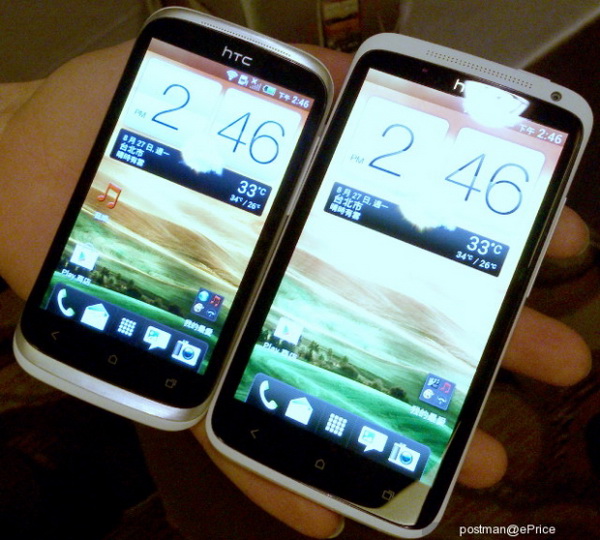 As for the features and design of Desire X, the new smartphone sports a similar design to the One range, almost pebble-like in shape. While it looks small, it features a 4-inch WVGA (480 x 800 resolution) Super LCD screen (seems that it is really a wonderful player to play HD videos on HTC Desire X), a dual-core 1GHz dual-core Qualcomm MSM8225 processor, 768MB RAM, a 5-megapixel camera, 1600 mAh battery, 4GB internal memory, microSD support and Android 4.0.4 (Ice Cream Sandwich).
As for the features and design of Desire X, the new smartphone sports a similar design to the One range, almost pebble-like in shape. While it looks small, it features a 4-inch WVGA (480 x 800 resolution) Super LCD screen (seems that it is really a wonderful player to play HD videos on HTC Desire X), a dual-core 1GHz dual-core Qualcomm MSM8225 processor, 768MB RAM, a 5-megapixel camera, 1600 mAh battery, 4GB internal memory, microSD support and Android 4.0.4 (Ice Cream Sandwich).According to HTC, the Desire X is HTC’s attempt at taking technology from its One range and “bringing it down to a mass market device.” This means you get the same f2.0 lens, BSI sensor, five level flash, burst mode photo feature, photo-taking in video mode and Sense 4.0 (which is said to have received an incremental upgrade) that is found in its more powerful cousins while at relatively low price.
The back of the device is distinctive with a small brushed area around the camera, helping you pick it out from a distance.
As for the price, there is no confirmed information, but believed to be in the £150-£200 range. HTC is targeting Europe and Asia with the Desire X, which is due to launch “mid-September”, offering a fairly decent set of specifications in a sleek and easily pocketable device.
займ на карту rusbankinfo.ru
-
Get Ready for the iPhone 5 on Apple’s Special September 12th Event
Posted on August 29th, 2012 No commentsThere were reports that the iPhone 5 might get released on a special September 12th event. And now, it has been confirmed and here I’m really happy to tell you all that the next generation of Apple iPhone has been scheduled for release on Wednesday, September 12th, with a shipment available nine days after that, September 21st, Friday. The new iPhone is said to be released in the event in San Francisco along with the new 7 inch iPad mini, the updated version of the current iPad 3, iPod Touch and iPod Nano. As only less than two weeks from the official introduction of this new gadget, people are becoming even more curious on the specs and features of iPhone 5, which is the name of the next generation iPhone most people prefer, just like the latest hot reports on the pin dock connector and NFC support. Today, let’s just make a preview of iPhone 5 to see what exactly it will be.
Firstly, let’s start with the pin dock connector of iPhone 5. There are hot sayings that the new iPhone will include a 9 Pin Dock Connector in place of the previous 30 Pin Dock Connector. From the latest news of 9to5 Mac, Apple will be replacing its current 30-pin connector with a new 9-pin dock connector in the next generation of iPhones, as well as all of its iOS devices in September. A smaller connector would make it impossible to use existing speakers, docks, and chargers without the use of an adapter converting it back to the traditional 30-pin, something that Apple will likely make available.
Secondly, let’s take a look on the screen and phone body. The iPhone 5 is believed to feature larger screen and thinner phone built. According to the sources, the new iPhone’s taller display screen is designed to accommodate additional five rows of apps. The screen is as large as 4.0 inches, much larger than the 3.6 inches screen display on iPhone 4S, with aspect ratio at 19:9, making it even more wonderful to watch HD videos on iPhone 5. The Phone is also 10% thinner than the iPhone 4S.
Next, let’s see the network connectivity and processor performance. The iPhone 5 is surely to run on the 4G LTE network connectivity, which is now applicable to most advanced smartphones. For the processor, the iPhone 5 is reported to run on the A6 processor, which is even faster than the A5X processor on iPhone 4S. No doubt, iOS 6 will be adopted in iPhone 5 when it comes out.
Another anticipating feature of iPhone 5 is NFC. There are reports which say iPhone 5 comes with no NFC support while the majority of reports support NFC capability on iPhone 5. From the reports and information leaked, the latter is more reliable.
Aside from these, the new iPhone is also reported to have Passbook as its first step into the mobile-payments space. The company has already acknowledged that it will be replacing Google Maps in iOS 6 with its own mapping application with 3D capabilities.
займ на карту rusbankinfo.ru
-
Upcoming HTC Mobile Phone Bomb: HTC Windows Phone C620e and Dual-Core HTC Desire X
Posted on August 27th, 2012 No commentsAs one of the most famous mobile phone manufactures in the world, HTC has always been concentrating on providing mobile phone users with advanced and up-to-date smartphones. There have been reports previously that HTC would be going to introduce two new models of smartphones, one of which is the HTC J while the other one is the new entry mobile phone for the dual-core mobile phone market, the HTC Desire X. ePrice just got the spy pictures of HTC Desire X and obtained the news that the mobile phone would be released in the coming days. Aside from these two models, after the leaked news from Bluetooth certification websites about two models of HTC Windows Phone 8 smartphones, there’re also reports about another HTC Windows Phone 8 mobile phone, which is reportedly named as HTC C620e, from Wi-Fi certification website of Indonesia. Both Desire X and C620e are reported to adopt dual-core processor.
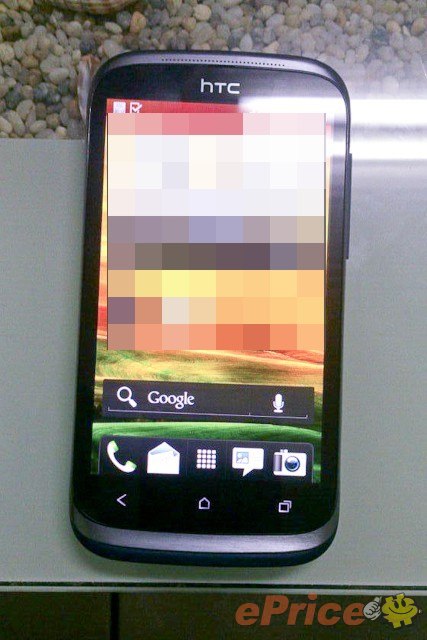 HTC Desire X would adopt 1GHz dual-core Qualcomm S4 MSM8225 CPU + Adreno 203 GPU processor. Aside from the main update in processor, Desire X will also include the camera configurations of HTC One series. For other features, HTC Desire X will run Android 4.0 ICS operating system and come with HTC Sense 4.0 user interface. The mobile phone features a large 4.0″ WVGA screen display, making it an excellent choice to watch HD videos on HTC Desire. The phone would have a 5MP main camera at the back supporting auto-focus and LED flashlight. Meanwhile, Beats Audio effect makes this smartphone a good audio player for you to enjoy music, while the battery is movable for recharging.
HTC Desire X would adopt 1GHz dual-core Qualcomm S4 MSM8225 CPU + Adreno 203 GPU processor. Aside from the main update in processor, Desire X will also include the camera configurations of HTC One series. For other features, HTC Desire X will run Android 4.0 ICS operating system and come with HTC Sense 4.0 user interface. The mobile phone features a large 4.0″ WVGA screen display, making it an excellent choice to watch HD videos on HTC Desire. The phone would have a 5MP main camera at the back supporting auto-focus and LED flashlight. Meanwhile, Beats Audio effect makes this smartphone a good audio player for you to enjoy music, while the battery is movable for recharging. For the HTC C620e, it is specially marked as WP8 mobile in the leaked news. The PM233xx test model might be the origin of this phone. According to the reports, the previously leaked HTC Accord seems to be more similar to HTC C620e, which is also on the list of the first HTC WP8 mobile phones to be shippable this October. Thus, HTC C620e might mostly probably be in the name of HTC Accord. Just like HTC Desire X, HTC C620e also comes with Qualcomm S4 MSM8260A dual-core processor. Also leaked are its 4.3″ 720P Super LCD2 touchscreen display, built-in 8MP camera with support of 1080P video recording, IGB RAM and NFC support function. As for the detailed release date, it is reported to be this October. So let’s just wait for some time.
For the HTC C620e, it is specially marked as WP8 mobile in the leaked news. The PM233xx test model might be the origin of this phone. According to the reports, the previously leaked HTC Accord seems to be more similar to HTC C620e, which is also on the list of the first HTC WP8 mobile phones to be shippable this October. Thus, HTC C620e might mostly probably be in the name of HTC Accord. Just like HTC Desire X, HTC C620e also comes with Qualcomm S4 MSM8260A dual-core processor. Also leaked are its 4.3″ 720P Super LCD2 touchscreen display, built-in 8MP camera with support of 1080P video recording, IGB RAM and NFC support function. As for the detailed release date, it is reported to be this October. So let’s just wait for some time.More detailed information would be provided.
займ на карту rusbankinfo.ru
-
All things about Windows 8: Windows 8 Release Date, Editions, Features, Prices
Posted on August 23rd, 2012 No comments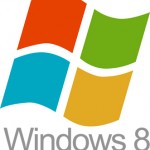 After long time of waiting and experiencing various versions, we finally welcomed the official announcement of the release and shipment availability of Windows 8. As an operating system for use on personal computers, Windows 8 could be applied to home and business desktops, laptops, tablets, and home theater PCs. It is part of the Windows NT family of operating systems and succeeds Windows 7.
After long time of waiting and experiencing various versions, we finally welcomed the official announcement of the release and shipment availability of Windows 8. As an operating system for use on personal computers, Windows 8 could be applied to home and business desktops, laptops, tablets, and home theater PCs. It is part of the Windows NT family of operating systems and succeeds Windows 7.According to the Windows Design Team, Windows 8 has been “reimagined from the chipset to the user experience,” whereas Windows 7 was intended to be a more focused, incremental upgrade to the Windows line. Windows 8 is reported to feature a new user interface based on Microsoft’s Metro design language, similar to that in Windows Phone. Also, Microsoft announced that the new OS would remove some old features of Windows OS line and add some new features. What indeed the Windows 8 would bring to the world then? Let’s just get a brief summary for Windows 8.
Release date
Windows 8 was first announced in January 2011 at Consumer Electronics Show. During its development and test phases, Microsoft released three pre-release versions: Developer Preview version (September 13, 2011), Consumer Preview version (February 29, 2012), and Release Preview version (May 31, 2012). On August 1, 2012, Windows 8 graduated from the development stage and was released to manufacturing. Windows 8 is slated for general availability on October 26, 2012.
Editions
Windows 8 is available in four major editions: Windows 8, Windows 8 Pro, Windows 8 Enterprise, and Windows RT. The first three have almost the same hardware requirements as that of Windows 7. The latter, however, runs on tablet computers with ARM architecture and has different hardware requirements. The other editions are not available in retail. The new Windows RT edition will only be available preinstalled by OEMs on ARM-based devices while the Enterprise edition will only be available through volume licensing. Hardware vendors willing to receive Microsoft’s certification for such devices need to adhere to a list of certification requirements.
Features
Metro
Based on Microsoft’s Metro design language, Metro UI is by far the biggest change in Windows 8, and can be the most confusing to use at first—especially for desktop users. The Metro environment features a new tile-based Start screen similar to that of the Windows Phone operating system. Each tile represents an application, and can display relevant information such as the number of unread messages for an e-mail application or the current temperature on a weather application. These applications run in full-screen or in docked modes, and are able to share information between each other using “contracts”. They will be available only through Windows Store. Apps in the new interface are developed with the new Windows Runtime platform using various programming languages, including C++, Visual Basic, C#, and HTML with JavaScript code-behind.The traditional desktop environment for running desktop applications is accessed via a tile on the new Start screen. The Start button has been removed from the taskbar in favor of a Start button on the new charm bar, as well as a hotspot in the bottom-left corner. Both open the new Start screen, which replaces the Start menu.
Applications developed for this new environment were previously referred to as “Metro-style apps” in development materials, connecting it to Windows 8’s use of an interface following the Metro design language as its primary desktop. However, reports surfaced that due to potential trademark issues with the German company Metro AG, Microsoft officials had begun to advise its Windows developers to stop using the term. A Microsoft spokesperson however, denied these reports and stated that the use of the term “Metro” to describe these apps was merely a codename that would be phased out. Following these reports, Microsoft started using “Modern UI Style” to refer to its tile-based interface and design language.
PowerShell 3.0
PowerShell is Microsoft’s strategic task automation platform and a core component of the overall management framework for Windows. Version 3 has been in beta for some time but the final version is included with Windows 8 (and Windows Server 2012 which has also been released to manufacturing).
Other features
* Internet Explorer 10 is included as both desktop program and as a touch-optimized app. The latter does not support plugins or ActiveX components, but includes a version of Adobe Flash Player that is optimized for touch and low power usage and works only on sites included on a whitelist.
* It is now possible to log into Windows using a Microsoft account (formerly known as a Windows Live ID). This will allow the user’s profile and settings to be synchronized over the Internet and accessible from other computers running Windows 8, as well as integration with SkyDrive.
* Windows Store will be the only method of purchasing and downloading Metro-style apps, as well as advertising desktop apps. Metro-style apps are installed from the Windows Store, or in the form of a Line Of Business app on devices joined in a network domain.
* Two new authentication methods have been added: picture password, which allows users to log in by drawing three gestures in different places on a picture, and PIN log in, which allows users to authenticate using a four digit pin.
* File Explorer will include a ribbon toolbar, and have its file operation progress dialog updated to provide more detailed statistics, the ability to pause file transfers, and improvements in the ability to manage conflicts when copying files.
* Hybrid Boot will use hibernation technology to allow faster startup times by saving the Windows core’s memory to the hard disk and reloading it upon boot.
* Windows To Go will allow Windows 8 Enterprise to boot and run from a bootable USB device (such as a flash drive).
* Two new recovery functions are included, Refresh and Reset. Refresh restores all Windows files to their original state while keeping settings, files, and apps, while reset takes the computer back to factory default condition.
* USB 3.0 is now supported natively.
* A new lock screen displays a clock and notifications while the computer is locked.
* Task Manager has been redesigned.
* Xbox Live integration (including Xbox Live Arcade, Xbox SmartGlass, Xbox Music, and Xbox Video).
* Storage Spaces will allow users to combine different sized hard disks into virtual drives and specify mirroring, parity, or no redundancy on a folder-by-folder basis.
* Family Safety is intended to allow parents to protect their children on the Internet, as well as monitor and control their PC and Internet activities and usage.
* Windows Defender now has anti-virus capabilities, similar to those of Microsoft Security Essentials. It is intended to replace the Security Essentials package and function as the default anti-virus program.
Price
Microsoft recently started accepting registrations for Windows 8 upgrades. Those who purchased a PC any time after June 2 can now sign up to receive the Windows 8 upgrade for $14.99 when the OS is released on Oct. 26.
Back in May, Microsoft announced that anyone who purchased a Windows 7 PC between June 2, 2012 and Jan. 31, 2013 could upgrade to Windows 8 Pro for $14.99. Registration for that offer is now live via windowsupgradeoffer.com for PC users in 140 countries. On Oct. 26, Microsoft will start sending out promo codes via email. When you upgrade via Windows.com, Microsoft will display the $39.99 price for general upgrades; enter the promo code on the confirmation page to get the $14.99 price. The promo code will expire until Feb. 28, 2013.
Those who bought a PC before June 2 or have an older Windows 7 PC they’d like to upgrade can get Windows 8 Pro for $39.99 via Windows.com starting Oct. 26. There are also reports that standalone copies of Windows 8 will cost $69.99 at launch, a price that will jump to $199 after Jan. 31, 2013.
After selecting your country, Microsoft will ask you to register your personal details and information about your new PC, including date of purchase, retailer, and PC brand and model. You’ll also need your 25-digit Windows 7 product key.
займ на карту rusbankinfo.ru
-
Mac OS X 10.8 Mountain Lion–Everything You Should Know
Posted on August 23rd, 2012 No commentsMac OS X Mountain Lion 10.8 Review
Released in July 25, 2012, Apple OS X 10.8 Mountain Lion is the latest release of the world’s most advanced desktop operating system which aims to update your Mac into the best computing experience ever. The update is the first major Mac OS X upgrade for over a year, and aims to close the gap between Apple’s Mac OS X and iOS. Once installed, Mac OX X 10.8 Mountain Lion will deliver over 200 new features to Mac computers, including enhanced iCloud support, Facebook integration, iMessage support and voice dictation.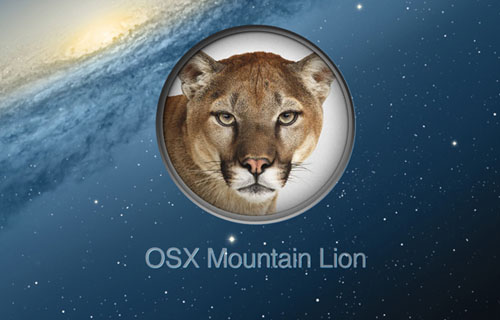
Main features in Mac OS X 10.8 Mountain Lion
Messages
● Send messages from your Mac to friends with an iPhone, iPad, or Mac.
● With iMessage, you can start a conversation on your Mac and pick it up on your iPhone or iPad.
● Messages also supports traditional instant messaging services like AIM, Yahoo! Google Talk and Jabber.iCloud
● Documents in the Cloud lets you create and edit your documents on your Mac, iPhone, and iPad.
● The new Reminders app makes managing tasks easy. Jot down your thoughts with the new Notes app. And iCloud keeps your Reminders and Notes up to date across all your devices.Safari
● Type both searches and Web addresses in the new Smart Search Field.
● Pinch to see tabs with Tab View and swipe to switch between them.
● iCloud Tabs makes the last websites you looked at accessible on your iPhone, iPad, and Mac.Notification Center
● New notifications appear in the top right corner of your screen.
● Open Notification Center from anywhere in OS X to see recent notifications.
● Configure your notifications to receive just the ones you want.Sharing
● Share links, photos, videos, and other files right from the app you’re in.
● Share with Mail, Messages, and AirDrop.
● Sign in to Twitter, Flickr, and Vimeo once to start sharing.
● Tweet right from your apps with the Tweet sheet.Game Center
● Play live multiplayer and turn-based games against friends on iPhone, iPad, iPod touch, or Mac.
● Log in to the Game Center app to see friends in your gaming network.
● Check out leaderboards and achievements.
● See what games your friends play and track your progress against them.Other great Mountain Lion features
● Dictation lets you talk anywhere you can type–no setup or training required.
● AirPlay Mirroring shows your Mac screen on your HDTV with Apple TV.
● Power Nap keeps your Mac up to date while it sleeps so it’s instantly ready to go.
● Gatekeeper makes it safer to download apps from the Internet by giving you control over which apps can be installed on your Mac.
● New features for Chinese users include improved text input, leading search engine Baidu as an option in Safari, sharing to microblogging service Sina Weibo and video websites Youku and Tudou, eight new fonts, and a new Chinese dictionary.More features can be found on Apple’s website
How does Mac OS X 10.8 Mountain Lion integrate with iOS?
Just like its predecessor, OS X Mountain Lion draws much inspiration from iOS, the operating system that powers the iPhone and the iPad.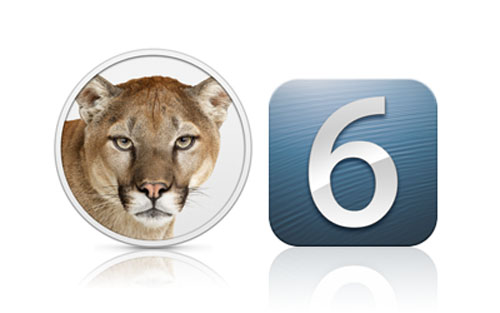
1. iCloud, Integrated
Apple’s first real foray into the world of cloud computing (unless you count the ill-fated and soon- departed MobileMe) was iCloud, and it wasn’t released until October 2011, well after the release of OS X 10.7 Lion. Mountain Lion makes it much easier for iCloud users to sync documents between Macs and iOS devices. Mountain Lion-aware apps let you save documents to iCloud or your local system directly from the file system. If you save a doc to iCloud, any revisions that you make on one device are instantly available on all your other Apple devices. There’s a Documents Library for easy access to your iCloud documents, with the most recently used documents sorted to the top. Mail, Contacts, Calendars, Messages, Notes, and many more Apple apps and services work with iCloud in Mountain Lion, and there’s an API that will allow developers to create iCloud-enabled apps, too.2. iChat Is Dead, Long Live Messages
The extremely popular iMessage service has displaced the venerable iChat on Mountain Lion. The result is a cross-platform service that lets users on Macs, iPhones, and iPads chat with each other. It allows for unlimited messaging, including the sending of high-quality photos, HD video, and attachments as large as 100MB. Mac users will want to restrain themselves when chatting with friends on metered mobile data plans, although the iOS version of the app is smart enough to route messages through Wi-Fi when it’s available. Messages shows delivery receipts by default, and there’s also an option to turn on read receipts. Messages are encrypted end to end, and there’s a button to escalate your chat to a FaceTime video call. Messages works with other instant-messaging services, including AIM, Google Talk, Jabber, and Yahoo.3. Game Center Now Playing on Mac
Game Center has made the move from iOS to Macs. If you don’t know it from iOS, Game Center is a social gaming platform. Looking for a new game or someone to game against online? This is where you’ll do it on your Mac. You’ll be able to play against anyone with a connected iPad, iPhone, or Mac, too. Game Center enables multiplayer games, in-game voice chat, and notifications of friend requests and game invitations. There will be an API for Game Center that lets developers leverage in-game chat, leaderboards and more.4. AirPlay Mirroring Makes Your TV an Apple Television
If you’ve got an Apple TV device on the same network as your Mac (with a second-generation Intel Core processor), Mountain Lion makes it simple to mirror your screen on your HDTV (at 720p resolution). AirPlay Mirroring pops up to let you know when it detects an Apple TV, and it handles all the resolution matching. Combined with Game Center, AirPlay Mirroring can more or less turn your Mac into a game console.5. New Notification Center
Mountain Lion unifies system and app messaging, giving all messages a consistent look and bringing them into one place. The Notification Center slides in and out from the right-hand side of the screen when you use a new trackpad gesture (a two-finger swipe from the right edge). Or you can click the Notification Center button in the upper right corner of the screen. (It turns blue when there are new notifications.) Apps can pop up banners, which last on your screen’s upper right corner for five seconds before moving into the notifications center. Alerts, on the other hand, pop up and persist until dismissed. There’s an API for developers, too, so that their apps can appear in the Notification center and conform to the Mountain Lion style.6. Share Sheets
Mountain Lion-enabled apps get Share Sheets. Press the share button from within the app and you get a menu (a “sheet”) of services for sharing links, pictures, videos, etc. At the preview stage, we saw links for AirDrop (to share directly to Macs on your network), email, Flickr, Message, Twitter, and Vimeo. (Facebook isn’t available in the initial release of Mountain Lion, but word is it’s coming soon.) The share button is baked in throughout the system: Safari is a no-brainer, but it’s a little cooler to find out that anything you can preview or QuickLook can pop up a Share Sheet. There’s a developer API for Share Sheets, too, so third-party apps can also get in on the sharing action. Twitter gets special mention. Click Twitter on a Share Sheet and you get a “Tweet Sheet” that contains whatever it is you’re tweeting about: link, picture, etc, with the usual character countdown. Once you’ve got Twitter set up, it gets added to the Notification Center, by default.7. Reminders Reach the Mac
The Reminders app you know from iOS—the same one that works with Siri on iPhone 4S and has geo-location reminder abilities – is now available for your Apple desktop. This simple organizational app keeps you on track with lists, due dates, and sorting by date. Apple iCloud can keep it synced across all your devices, and it also works with CalDAV services, such as Google Calendar and Yahoo Calendar (though you can keep local-only reminder lists, too).8. Take Note of Notes
Mountain Lion takes another page from iOS and pulls Notes out of email, promoting it to its own app. Notes can be fairly rich, content-wise; you can drag and drop photos and attachments to Notes and format them with bullets, fonts, numbered lists, and so on. You can pin Notes to your desktop with a double click, and the Share button makes it easy to send them to collaborators. Finally, with iCloud, all your Notes are synced across all your Macs and iOS devices.9. Gatekeeper Keeps Mountain Lion Safe
Mountain Lion beefs up security with Gatekeeper, a powerful line of defense against future threats. Gatekeeper prevents malware by only running apps it deems safe because (at Gatekeeper’s most restrictive setting) you downloaded them from the Mac App Store, or (by default) because they were downloaded from the App Store or written by licensed Apple developers and contain digital signatures that are destroyed if hackers modify the code. There is a third setting you can choose, too, that will let you run apps downloaded from anywhere. Apple will provide digital signatures to every registered developer for inclusion in their software, so by the time Mountain Lion ships, most safe apps should be signed.10. One More Thing: China
Apple has a chance to get some positive China-related coverage for a change with its OS X 10.8 Mountain Lion one more thing: A big push for improved Chinese localization. And why not? It’s a huge market, and Apple CEO Tim Cook revealed earlier this year that Mac adoption in China doubled last year versus 2010. New features include improved text input, for example, with better suggestions for Chinese characters, and typing for English and Chinese characters without toggling between the two for more convenient input of names or words without Chinese equivalents. Apple also promises to more than double the number of Chinese characters supported in handwriting recognition, auto-correction, and improved text input for those who type Pinyin with regional pronunciations. Apple also gives a nod to local services: Users will also be able to set up Mail, Contacts, and Calendar with services like QQ, 126, and 163. Also planned is Baidu search in Safari, as well as access to Chinese social-network site Sina weibo and video sites Youku and Tudou via share sheets.Why you should choose Mac OS X 10.8 Mountain Lion?
With the new Messages app you can send text, photos, videos, contacts, Web links, and documents to anyone using another Mac, iPhone, iPad, or iPod touch — you can even start a conversation on one device and continue it on another. The new Share button makes it easy to share files, Web pages, photos, and videos, as well as tweet right from the app you are using. With the Reminders app you can create to-do lists and alerts that appear in the new Notification Center. With Notes you can write down all your ideas and even speak your words with voice dictation. Play head to head games on your Mac with friends on their Macs or iOS devices with Game Center. And with iCloud built in, it’s simple to keep all your mail, contacts, calendars, reminders, notes, to do lists, music, photos, iWork files, PDFs, and more up to date across all your devices.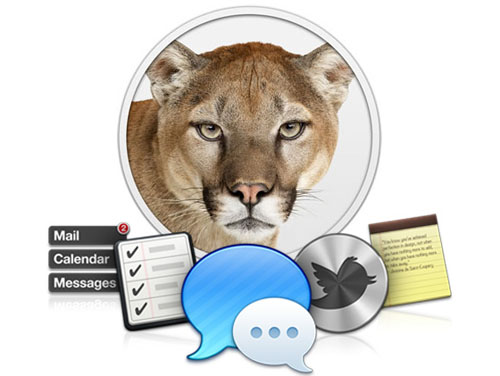
How and Where to Get?
Unlike previous iterations of the operating system users won’t be able to buy the software on disc or USB, and will instead have to pay $19.99 to download the update from Apple’s Mac app portal.
Getting it is a cinch. Open the Mac App Store OSX, just a couple of clicks away from purchase. It installs right over the top of your current version. It’s wise to make a complete backup of your system before you go ahead with the upgrade. If you do that with Time Machine, it’s easy to roll back to your previous operating system if something goes wrong.How to upgrade to Mountain Lion?
Step 1: Make sure your Mac can run Mountain Lion
Not all Mac owners will be able to upgrade. Mountain Lion won’t be compatible with Macbooks dated pre-2007 or a Mac Mini from before 2009. Your Mac must be one of the following models:
● iMac (Mid 2007 or newer)
● MacBook (Late 2008 Aluminum, or Early 2009 or newer)
● MacBook Pro (Mid/Late 2007 or newer)
● MacBook Air (Late 2008 or newer)
● Mac mini (Early 2009 or newer)
● Mac Pro (Early 2008 or newer)
● Xserve (Early 2009)Step 2: Make sure you have Lion or the latest version of Snow Leopard
If you are running Lion (10.7.x), you’re ready to update to Mountain Lion. Go to Step 3. If you are running Snow Leopard (10.6.x), update to the latest version of OS X Snow Leopard before you purchase OS X Mountain Lion from the Mac App Store. Click the Apple icon and choose Software Update to install Snow Leopard v10.6.8, the latest version.Step 3: Download OSX Mountain Lion from the Mac App Store
Open the Mac App Store from your Dock to buy and download Mountain Lion. Then follow the onscreen instructions to install it.займ на карту rusbankinfo.ru
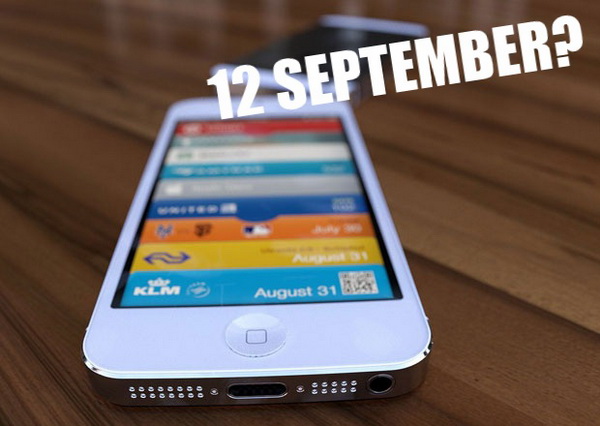
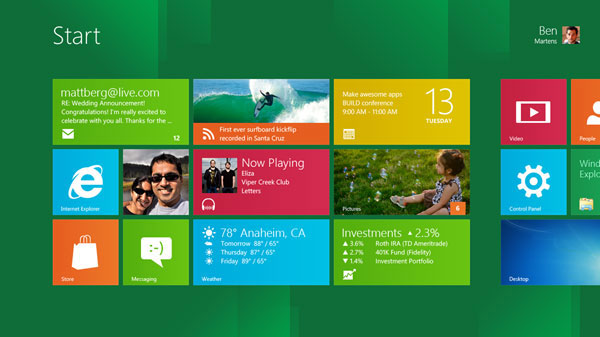
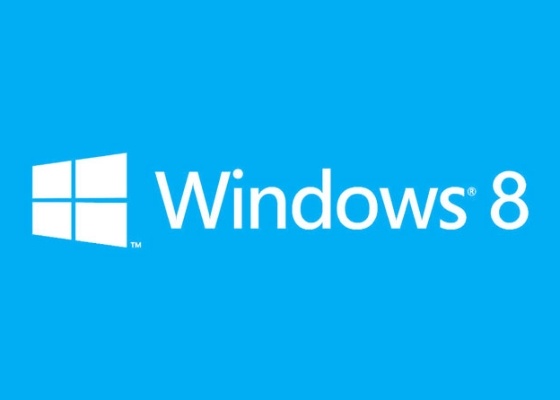





Recent Comments